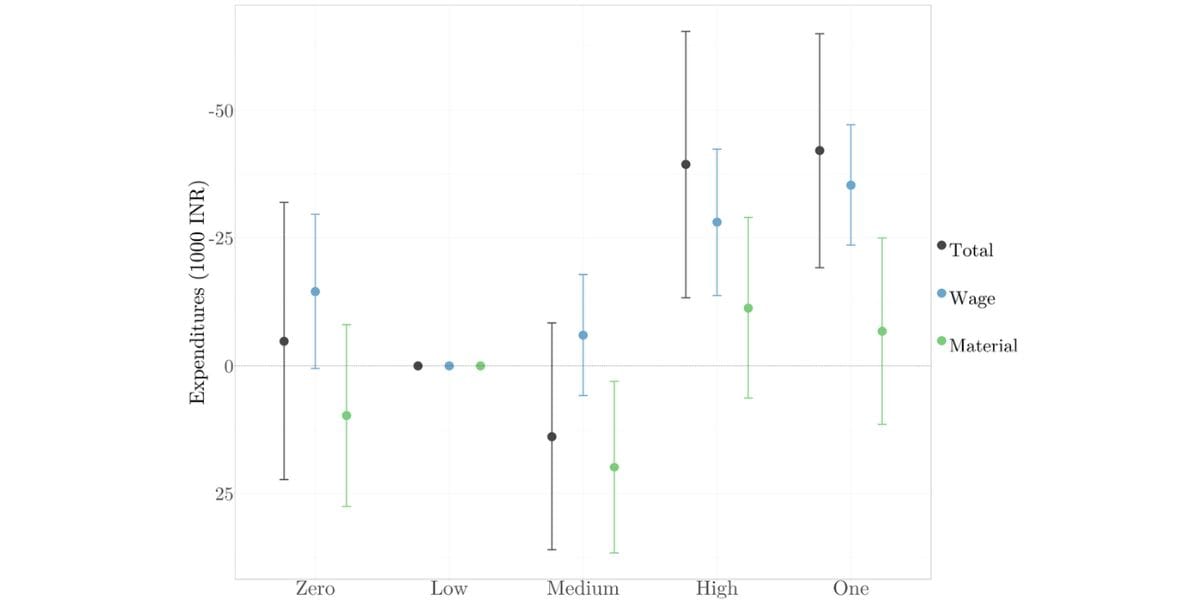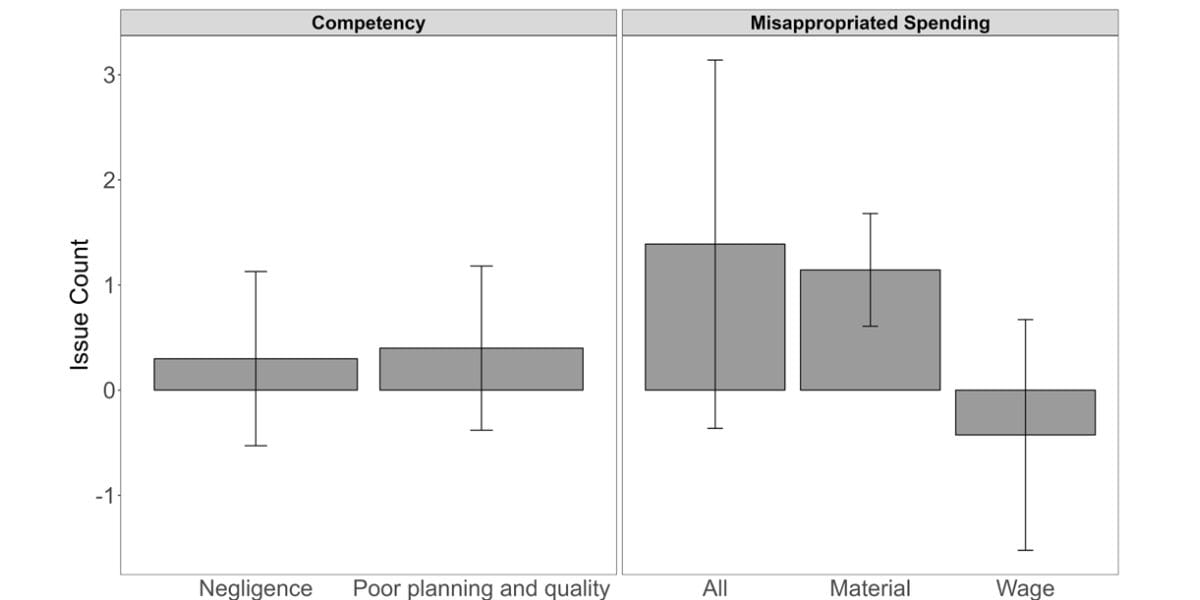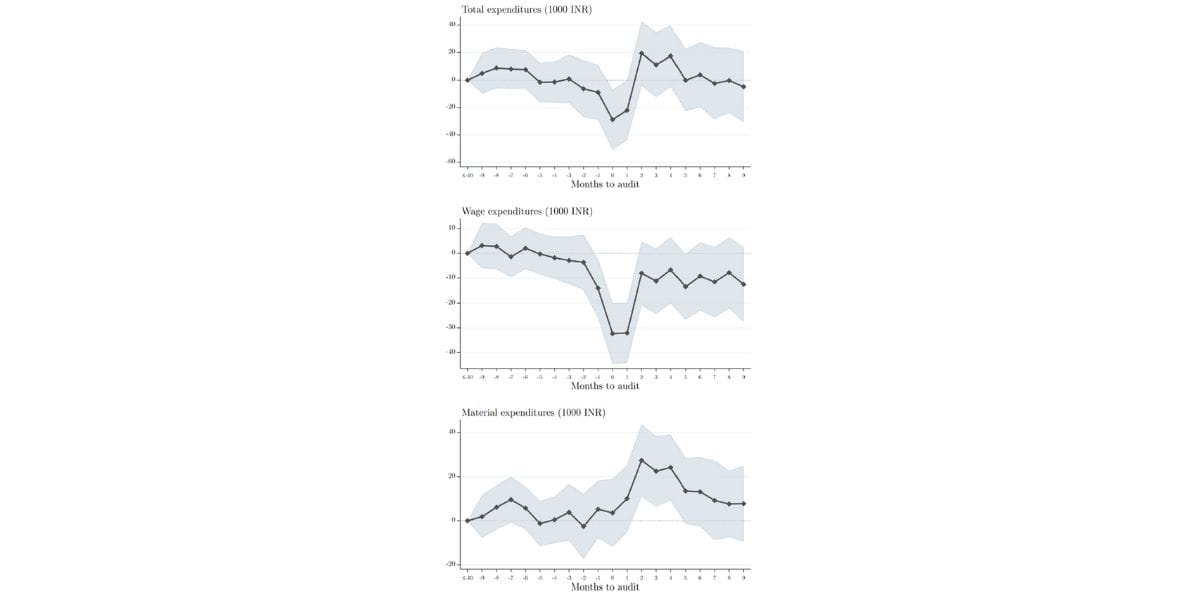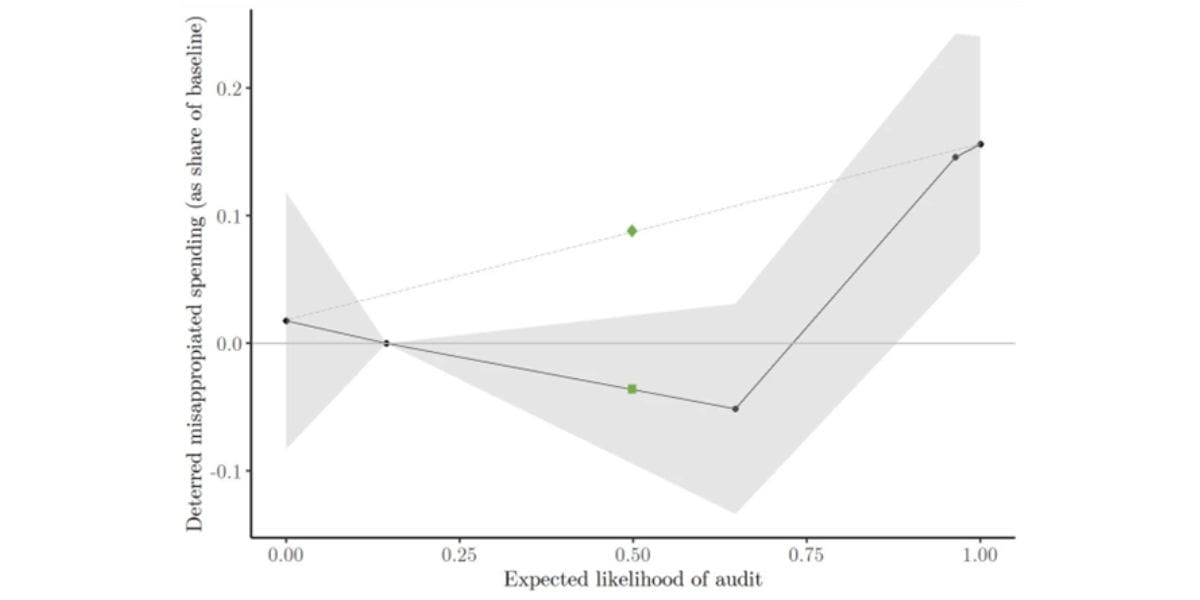Corruption scandals are commonplace. They dominate news cycles from time to time and fuel doubts about how well public systems work. In Jharkhand, high-profile bureaucrats and their conspirators were recently caught embezzling from the Mahatma Gandhi National Rural Employment Guarantee Act (MNREGA). While the prevalence of corruption is unsettling, the fact is that the financial misappropriation of public funds was identified, and those bureaucrats fell from grace and are awaiting trial – monitoring and accountability for the win.
In MNREGA, the social audits written into Section 17 of the Act embody the democratic principle of creating an informed electorate to keep government officials in check. Social audits are routine audits of Gram Panchayat (village council) operations of MNREGA, whose findings are announced in a Gram Sabha (village public hearing) to help citizens stay informed about the performance of local bureaucrats, making it possible to hold bureaucrats accountable.
Making the most of what we have to maximise deterrence
We know a lot from empirical research about how to conduct audits to be more impactful in leading to better bureaucrat behaviour (Finan, Olken and Pande 2017). For example, audits are more effective when auditors are independent, consequences from audit issues are imposed, and when audits are more frequent. Yet, budget limitations restrict the ability to audit with the quality or intensity necessary to further deter corrupt behaviour. In my research (Wong 2023), I consider how to work with limited resources to maximise deterrence through an audit programme. Specifically, I ask: If the goal is to incentivise better behaviour through audits with the resources available, should bureaucrats be informed of their audit or be audited unexpectedly?
Consider the following example: Suppose corrupt bureaucrats are only deterred by the threat of an audit when they are at least 80% sure an audit will occur. With limited resources, the audit agency can only audit 50% of bureaucrats. Then, a policy that provides no additional information to bureaucrats leads them to believe there is a 50/50 chance of an audit. This policy achieves no deterrence, since a 50% probability is strictly lower than an 80% probability. Auditors could instead provide information to increase bureaucrats’ confidence about whether they will be audited or not. The outcome under this policy is that some bureaucrats are deterred while others are not, which is better in aggregate than no deterrence at all.
I explore this issue by studying the monitoring policy in Jharkhand of bureaucrats responsible for implementing MNREGA during 2016-2019. Under this monitoring policy, bureaucrats took turns being audited. Audits were also randomly assigned, which generated exogenous and varying expectations of being audited among bureaucrats. I estimate the changes in misappropriated programme expenditures as bureaucrats’ expectations of being audited change.
Leveraging a staggered rollout of MNREGA audits
MNREGA is the largest public employment programme in the world, providing social insurance to 11.5% of the world’s population. The programme guarantees 100 days of minimum-wage employment annually to rural households to work on public projects involving manual labour. Issues with MNREGA programme implementation range from participant payment delays and poor work-planning, to fabricated employment and material procurement. Existing literature and audit reports document the problem of financial misappropriation in MNREGA (Khera 2011).
I leverage a monitoring policy, implemented in Jharkhand during 2016-2019, where audit timing was randomly assigned and conducted in rotation until all Gram Panchayats received an audit. The combination of the staggered implementation, the randomisation design, and the information from auditor announcements, generated random variation in bureaucrats’ expectations of being audited. Bureaucrats observe who has been and is waiting to be audited. The longer bureaucrats wait to be audited, as audits are assigned in turn, the better they can predict their audit in advance. In contrast, those who were audited early expect their next audit will not occur until the ongoing round of audits has been completed for everyone.
I estimate these anticipatory responses of bureaucrats on monthly programme expenditures by employing an ‘event study’-like specification to capture anticipatory behaviour around the timing of announcements. The challenge is that programme expenditures comprise both honest and misappropriated expenditures. Using administrative and audit report data to overcome this challenge, I show that my estimates are consistent with changes in misappropriated expenditures and are inconsistent with potential confounding mechanisms that may drive changes in honest expenditures.
Key insights
Bureaucrats are more responsive when expectations of being audited are high: Anticipatory effects of the audit on spending are substantial. They are more responsive at higher (that is, high to certain expectations one will be audited) than lower expectations of being audited. When expectations of being audited are lower (zero to medium), expenditures are statistically indistinguishable between these periods. When expectations of being audited are high, there is a 15% decline in expenditures. This result is driven by a decline in wage expenditures.
Figure 1. Changes in expenditures as expectations of being audited vary

Note: (i) The vertical axis is flipped because declines in misappropriated expenditures mean greater deterrence (ii) dots represent coefficient estimates of average behaviour and whiskers represent 95% confidence intervals. A 95% confidence interval (CI) means that, if you were to repeat the experiment over and over with new samples, 95% of the time the calculated CI would contain the true effect.
Bureaucrats adjust timing and type of misappropriated spending as expectations of being audited increase: As expectations of being audited increase, bureaucrats substitute wage misappropriation for material procurement misappropriation. This behaviour is observed for the medium expectations group where there was a 24% increase in material expenditures, while changes in total and wage expenditures were not statistically different from zero. Data from auditor reports for performance during this period correspondingly show higher detection in counts of issues related to misappropriated material procurement, where relative to wage misappropriation, the number of issues detected was not statistically different from zero. These findings from auditor reports support that estimated changes in programme spending are a good proxy for changes in misappropriated spending.
Figure 2. Audit report data on changes in misappropriation and other bureaucrat behaviour, for the medium expectations group

Similar adjustments are observed by bureaucrats around the month of audit. During the month, to a month after the audit, we observe a statistically significant fall in total expenditures by 9-12% through a 17% fall in wage expenditures. Total expenditures then experience a 3-6% increase, though statistically insignificant, in the 2-4 months following the audit, driven by a 24-30% statistically significant increase in material spending. Additional analyses suggest that this result further implies a substitution between wage and material misappropriation to evade detection during the audit period.
Figure 3. Changes in expenditures around the time of audit across time and type of expenditure

Notes: (i) This figure is estimated with event studies around the time of audit. (ii) The omitted category is 10 or more months before the audit. The raw mean (average) of the omitted category is Rs. 2,72,000, 1,87,000, and 85,000 for total, wage, and material expenditures, respectively. (iii) 95% CI are captured by the shaded region.
Providing information about the audit in advance is best: I develop an ‘optimal signaling model’ following the literature on Bayesian persuasion (Kamenica and Gentzkow 2011). In this model, a principal is concerned with maximising deterrence among bureaucrats. The principal has a choice over the information communicated about the likelihood of being audited. The optimal communication of audit risk depends on the relationship between bureaucrat deterrence and their expectations of being audited. This relationship, specific to its setting, is determined by the relative benefit from engaging in additional misconduct considering bureaucrats’ costs if they are caught and penalised under an audit. The relationship between bureaucrat deterrence and their expectations of being audited is a sufficient statistic for characterising the principal’s optimal communication policy and analysing welfare under counterfactual policies. I use the estimated anticipation effects to back out the optimal communication policy.
Figure 4 plots the relationship between deterrence and bureaucrats’ expectations of being audited. Deterrence, on the vertical axis, is the estimated change in expenditures as a share of expenditures of the baseline group (taken from Figure 1). Expectations of being audited, on the horizontal axis, is the likelihood civil servants believe they will be audited. To be agnostic, I make a range of assumptions about bureaucrats’ expectations. I base these assumptions on information from the auditor announcements over time. The figure below shows the relationship when bureaucrats’ expectations are assumed to be based on concurrently observed information.
Figure 4. How providing information about the audit in advance achieves more deterrence

Notes: (i) Beliefs are constructed based on concurrent information observed by bureaucrats. (ii) 95% CI in grey.
Suppose budget constraints only allowed the agency to audit 50% of bureaucrats. Bureaucrats’ prior expectations of being audited is then 50%. Without more information, this leads to an amount of deterrence demarcated by the green square in the figure. Instead, the auditor could communicate information – that is, inform a random subset of bureaucrats of an audit (leading to an expectation of 1) and inform the rest of no audit (leading to an expectation of 0). This achieves a higher amount of deterrence demarcated by the green diamond in the figure, which is a weighted combination of the endpoints.
Policy implications
Informing a random subset of civil servants when they will be audited or not maximises deterrence in this specific setting. This conclusion is driven by the finding that bureaucrats’ deterrence is more responsive on the margin at higher than lower expectations of being audited. Signals that communicate more information yield more deterrence than signals that maintain unpredictability. This also implies that assigning audits randomly without replacement is better than randomly with replacement.
Applying a model of ‘signaling’ to these estimates, I find that a policy that informs of audits in advance would have led to USD 35 million (or 16% of average annual expenditures) less in misappropriated expenditures when compared to a policy that provides no information and maintains uncertainty – all without changing the budget to conduct audits. Given prevailing practices to maintain uncertainty among audit subjects, changes to the design of communicated information tied to incentives, such as the perceived costs from monitoring, can be powerful for audits of public programmes and in other settings.
Wendy Wong is a Fellow at the CRI Foundation working with USAID’s Development Innovation Ventures and a Postdoctoral Scholar (until August 2024) with the Development Innovation Lab at the University of Chicago’s Becker Friedman Institute for Economics.
This article was first published on ‘Ideas for India’.






